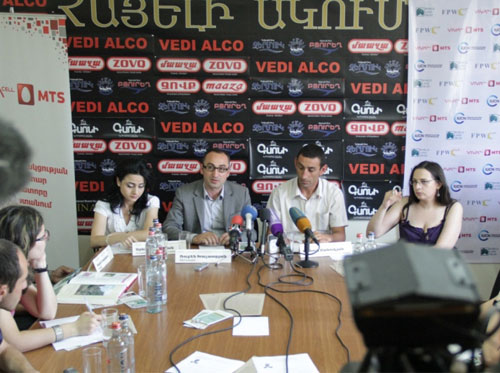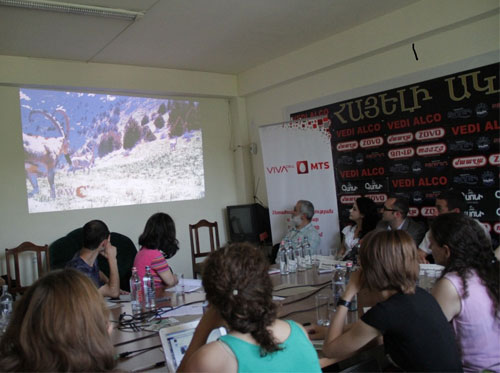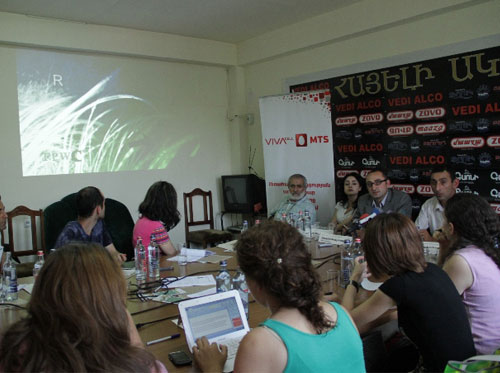The sensational video, which is the first recording of a rare Caucasian panther in Armenia since six years, was shot by a trap camera in the night from June 30 to July 1 in a very remote area of FPWC’s Caucasus Wildlife Refuge.
The refuge encompasses all in all 2000 hectares stretching along the border of Khosrov Forest State Reserve in the vicinity of Urtsadzor village. FPWC maintains the territory as a protected area with the support of VivaCell-MTS, the British organization World Land Trust and the Dutch Committee of the IUCN (IUCN NL). The Caucasus Wildlife Refuge is the only privately managed protected area in the entire South Caucasus, VivaCell-MTS informs.
Today, in a press conference FPWC and VivaCell-MTS presented the video as well as their joint conservation efforts in the Caucasus Wildlife Refuge. The camera trap video does not show the full body of the panther but only the spotted tail of the big cat as the camera starts recording only after a short delay of approx. 5 seconds. But the FPWC rangers have again adjusted the trap cameras along the probable track of the big cat and hopefully a video showing the full animal will be soon recorded.
But the new video showing a glimpse of the secretive animal is not the only proof for its presence in the Caucasus Wildlife Refuge. Already since spring 2012 the FPWC rangers collected several samples of panther fur and faeces in the same area where now the video was shot. The samples were genetically analysed in an Israeli laboratory connected to Jerusalem Zoo with the result that they originated from a Caucasian panther (Pantera pardus saxicolor). Now the video recording finally proves that a panther has chosen FPWC's Caucasus Wildlife Refuge as a safe haven offering an undisturbed natural habitat and plenty of prey.
The video footage of the panther as well as other video recordings showing for example Bezoar goats, Syrian brown bears, Bearded vultures, wolves, wild boars, foxes and many other species are a tangible result of the joint efforts of FPWC and the organization’s partners since 2010. For three years the area is now under permanent monitoring by rangers operating from a ranger station. Poaching, grazing, illegal logging and any other negative human impact is strictly prohibited. This efficient management approach bears fruits - the Caucasus WildlifeRefuge provides a safe wildlife corridor in the buffer zone of the Khosrov State Reserve with increasing wildlife sightings in particular of large Bezoar goat herds. The latter is extremely important as the presence of a panther in the area is closely linked to the availability of enough prey namely Bezoar goats.
According to estimations only 3 – 5 panthers still roam in Armenia (some of them are migratory). Each panther needs habitat of some 18,000 – 25,000 hectares, and their populations have been decimated by poaching, and degradation of habitat caused by livestock grazing, plant gathering and deforestation. The natural corridors now used by the big cat are the Zangezur and Megri mountains in southern Armenia. In a long term perspective FPWC in cooperation with VivaCell-MTS, World Land Trust and IUCN NL strives to extend the successful management approach of the Caucasus Wildlife Refuge to some of these areas in order to save the Caucasian Panther, Armenia’s most charismatic large carnivore, for future generations.

17:29 | 24.09.25 | Articles
Jacopo Losso on Cross-Border Investments and Why Armenia Attracts Angels











